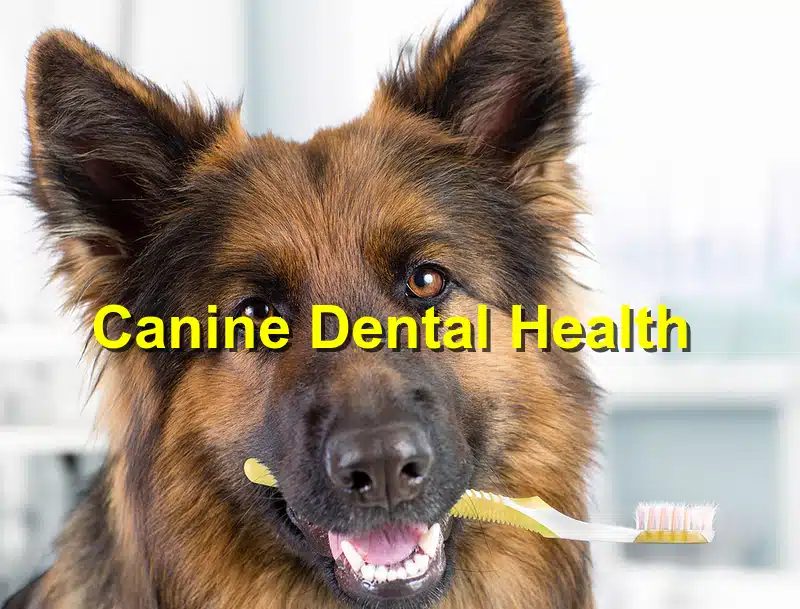Keeping your dog’s teeth clean is an essential part of maintaining their overall health. Just like humans, dogs can suffer from dental issues like plaque buildup, gum disease, and bad breath if their teeth are not properly cared for. Brushing your dog’s teeth regularly is one of the best ways to ensure their oral hygiene, and it can prevent more serious health problems down the road. Here’s a guide to help you understand canine dental health and how to brush your dog’s teeth effectively.
1. Why Canine Dental Health Matters
Good dental hygiene is crucial to your dog’s health and well-being. Without proper care, plaque can form on their teeth, leading to tartar, gum disease, and even infections that can affect their organs like the heart and kidneys. Dental issues can also cause your dog pain and discomfort, making eating difficult. Regular brushing is key to preventing these problems and ensuring your dog lives a happy, healthy life.
- Prevents Tooth Decay and Gum Disease: Brushing removes food particles and plaque, which can harden into tartar and lead to infections.
- Avoids Bad Breath: Regular cleaning keeps your dog’s breath fresh, preventing the buildup of bacteria that causes bad smells.
- Improves Overall Health: Dental disease in dogs can lead to serious complications, including infections that spread to vital organs.
2. Choosing the Right Tools
Before brushing your dog’s teeth, it’s important to have the right tools on hand. Not all toothbrushes and toothpaste are created equal, and human products should never be used on dogs.
- Dog-Specific Toothbrush: There are toothbrushes designed specifically for dogs, with soft bristles and long handles for easy reach. For smaller dogs, you can use finger brushes that fit over your finger for better control.
- Dog-Friendly Toothpaste: Human toothpaste contains ingredients like fluoride, which can be toxic to dogs. Instead, choose a dog-specific toothpaste that comes in flavors like chicken or peanut butter to make the experience more enjoyable for your pet.
3. How to Brush Your Dog’s Teeth: Step by Step
Brushing your dog’s teeth may take some practice, especially if they’re not used to it. Be patient, and try to make the experience as positive and stress-free as possible. Here’s a simple step-by-step guide:
- Get Your Dog Comfortable: Choose a calm, quiet environment where your dog feels relaxed. Gently handle their mouth and teeth before introducing the toothbrush, so they get used to the sensation.
- Introduce the Toothpaste: Let your dog taste the toothpaste first to familiarize them with the flavor. Most dogs enjoy the taste of pet toothpaste, which makes the process easier.
- Start Slowly: Gently lift your dog’s lip to expose their teeth and gums. Begin by brushing a few teeth at a time, using a gentle circular motion. Focus on the outside surfaces of their teeth, as dogs don’t get as much plaque buildup on the insides.
- Brush the Gums: Make sure to brush along the gumline, as this is where plaque and tartar tend to accumulate the most. Be careful not to apply too much pressure, as their gums can be sensitive.
- Work Up to a Full Brushing: If your dog is nervous, start with just a few teeth each session and gradually increase the time as they become more comfortable. Eventually, aim to brush for about two minutes per session.
- Reward Your Dog: After brushing, reward your dog with praise, playtime, or a favorite treat. Positive reinforcement will help them associate teeth brushing with a pleasant experience.
4. How Often Should You Brush Your Dog’s Teeth?
Ideally, you should brush your dog’s teeth daily to prevent plaque buildup and maintain their dental health. However, brushing at least a few times a week can still make a significant difference. Consistency is key, so try to establish a regular routine that works for both you and your dog.
- Daily Brushing: The gold standard for optimal canine dental health.
- 3-4 Times a Week: This frequency is still beneficial for plaque prevention if daily brushing isn’t possible.
5. Additional Dental Care Tips
Brushing is just one part of maintaining your dog’s dental health. Here are some additional ways to keep their teeth clean and healthy:
- Dental Chews and Toys: Special dental treats and chew toys are designed to help remove plaque and tartar. They can be a good complement to brushing, but not a replacement.
- Regular Vet Checkups: Your veterinarian can perform professional dental cleanings and check for any signs of dental disease. Regular checkups are essential to catch potential issues early.
- Dietary Considerations: A healthy diet can contribute to better dental health. Some dog foods are specifically formulated to reduce plaque and support oral health.
6. Signs of Dental Issues in Dogs
It’s important to watch for signs that your dog may be developing dental problems. If you notice any of these symptoms, schedule a vet appointment as soon as possible:
- Bad Breath: Persistent bad breath can be a sign of plaque buildup or gum disease.
- Difficulty Chewing or Dropping Food: If your dog is having trouble eating, it could indicate dental pain.
- Red or Bleeding Gums: Inflamed or bleeding gums are often a sign of gingivitis or infection.
- Yellow or Brown Tartar on Teeth: Visible tartar buildup should be addressed to prevent further issues.
Conclusion
Maintaining your dog’s dental health is crucial for their overall well-being, and brushing their teeth is one of the most effective ways to prevent oral issues. By establishing a regular brushing routine, using the right tools, and keeping an eye on their dental health, you can help your dog live a healthier and happier life. Make the process enjoyable and stress-free for your dog by being patient, consistent, and offering plenty of praise and rewards.
References: ANAW, World Animal UK




